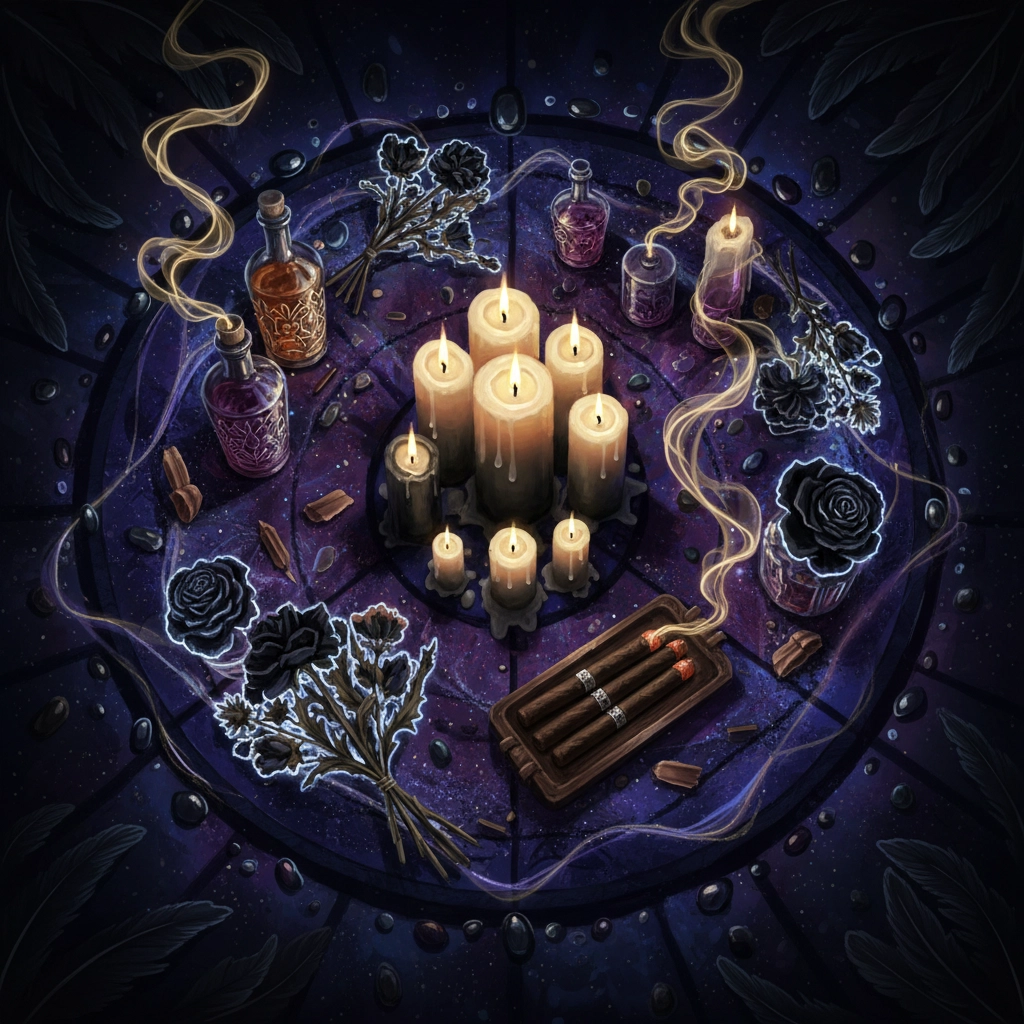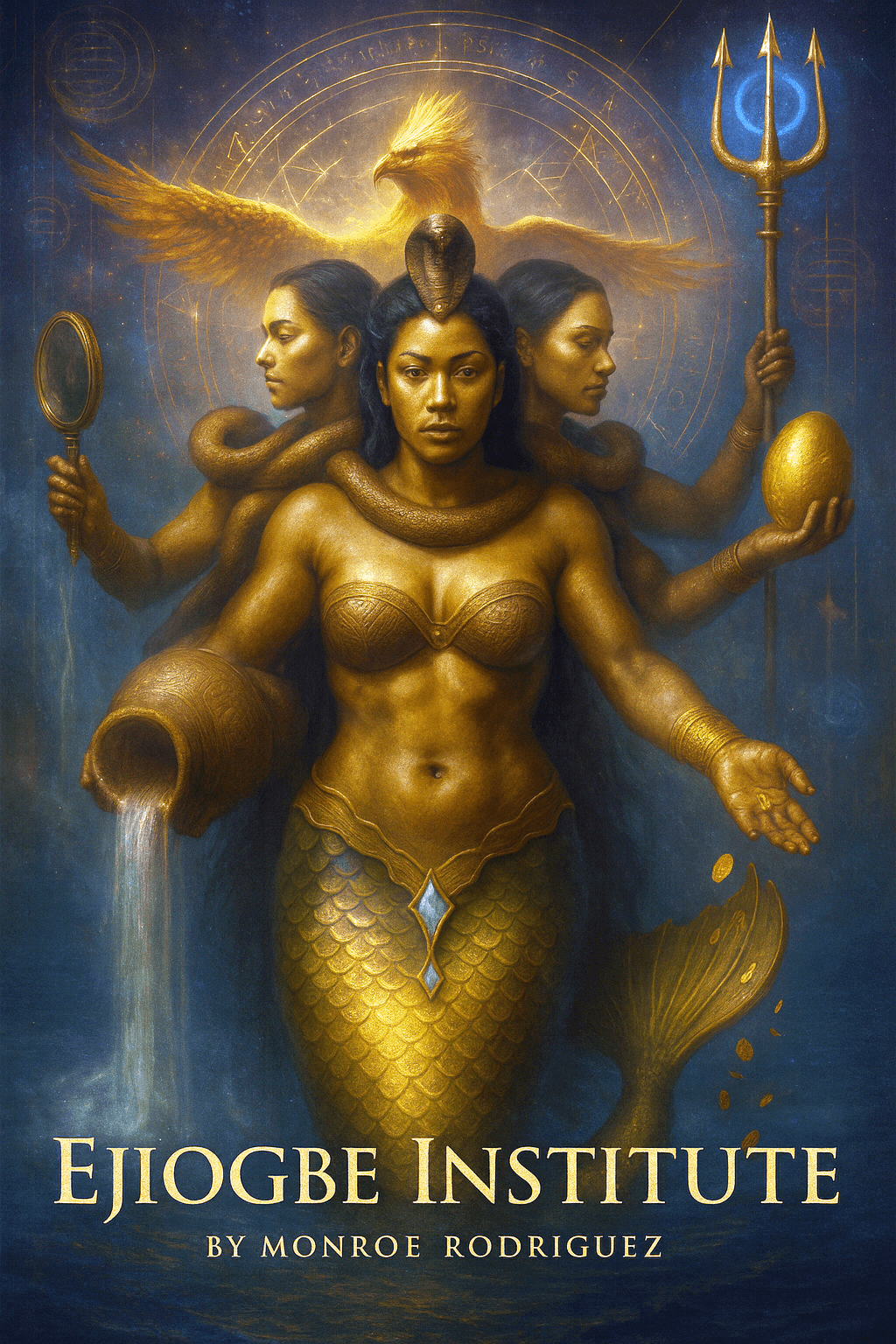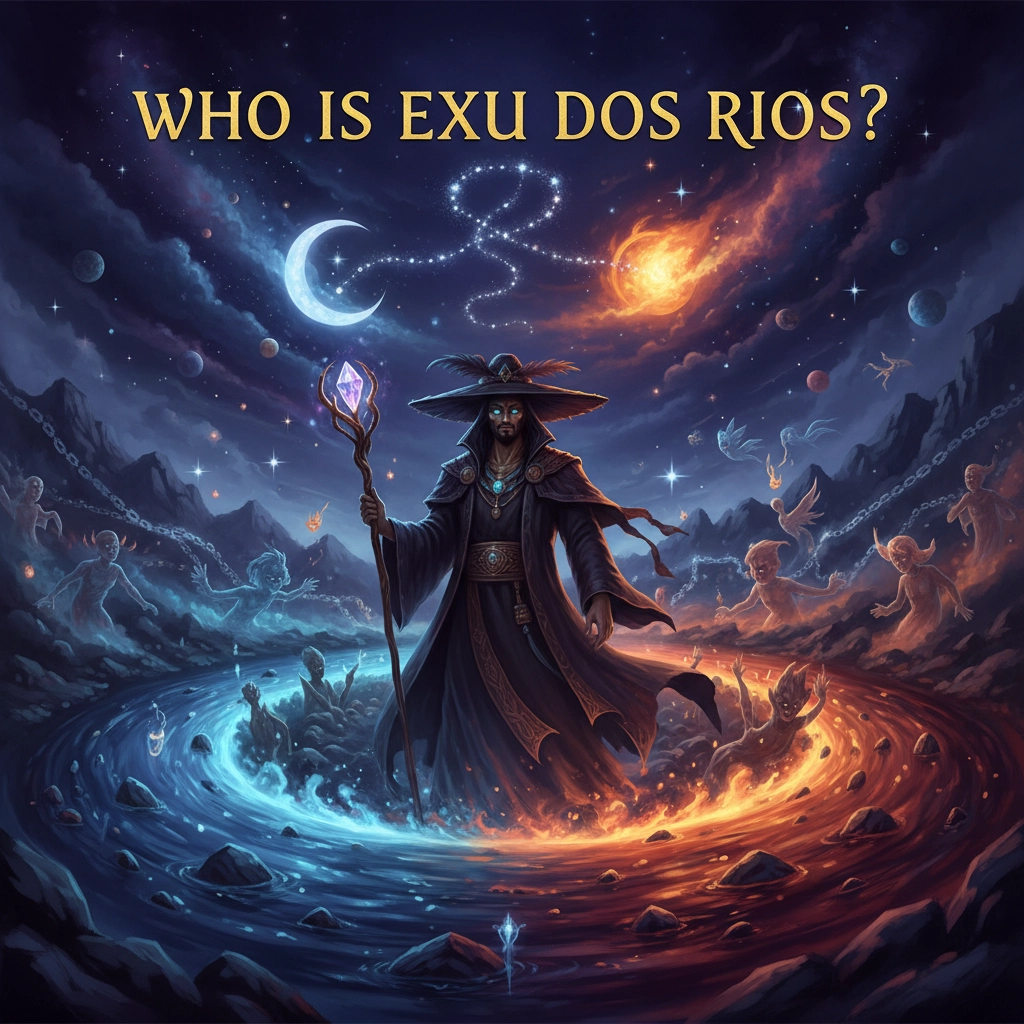When most people hear the word "death," they recoil. They think of endings, fear, and darkness. But what if I told you that in the rich tapestry of Afro-Brazilian spirituality, death isn't the enemy: it's the ultimate transformer? Meet Exu da Morte, one of the most misunderstood yet profoundly important spiritual entities in Quimbanda tradition.
Far from being a harbinger of doom, Exu da Morte, literally "Exu of Death": serves as a compassionate guardian who helps souls transition from one realm to another. This isn't your Hollywood version of death; this is death as liberation, transformation, and profound spiritual service.
The Shocking Truth About Death in Quimbanda
Here's what mainstream spirituality won't tell you: death isn't the opposite of life: it's life's greatest teacher. In Quimbanda, an Afro-Brazilian religious tradition that fearlessly embraces the shadow aspects of existence, Exu da Morte stands as living proof that our relationship with mortality can be radically different.
While other spiritual traditions often sanitize or avoid discussions of death, Quimbanda practitioners understand a fundamental truth: you cannot fully embrace life without acknowledging death's role as the ultimate catalyst for transformation. Exu da Morte embodies this philosophy, serving not as a destroyer but as a protector of suffering souls and a facilitator of their sacred passage between worlds.

Who Exactly Is This Mysterious Guardian?
Exu da Morte represents one of the most specialized manifestations of Exu, the complex spiritual entity who serves as messenger, guardian, and intermediary between human and spiritual realms. But unlike other aspects of Exu who might govern crossroads, communication, or trickery, Exu da Morte holds dominion over the most profound crossroads of all: the boundary between life and death.
This powerful entity operates within Quimbanda tradition, where spiritual practitioners work with both light and shadow aspects of existence. Rather than fearing the darker elements of human experience, Quimbanda embraces them as necessary components of spiritual growth and understanding.
Think of Exu da Morte as the ultimate spiritual social worker: someone who specializes in helping souls navigate their most challenging transition. When someone is dying, suffering, or struggling with the fear of mortality, Exu da Morte provides guidance, protection, and comfort during their passage.
The Visual Poetry of Death Transformed
The traditional depictions of Exu da Morte tell a story that challenges every preconception about death imagery. Picture this: a skeletal figure draped in flowing black robes, holding the iconic scythe of transformation. But here's where it gets interesting: sometimes this powerful entity is portrayed with arms outstretched in a Christ-like pose, creating a striking synthesis of African spiritual wisdom and Christian symbolism.
This isn't accidental imagery. The visual representation speaks to the profound syncretism that defines Brazilian spirituality, where African traditions, Indigenous wisdom, and European religious elements blend into something entirely new and powerful. The skeletal form doesn't represent decay: it represents the essential, eternal aspect that remains when all illusions are stripped away.

Domains of Power: What Exu da Morte Actually Controls
Let's shatter another misconception: Exu da Morte doesn't cause death. Instead, this entity governs the spiritual mechanics of transition, transformation, and release. The domains of power include:
Death as Transformation: Exu da Morte oversees the sacred process by which consciousness shifts from physical embodiment to spiritual existence. This isn't about ending life: it's about facilitating the soul's evolution.
Cemetery Guardianship: As the lord of cemeteries, Exu da Morte protects sacred burial grounds and ensures that the resting places of the deceased remain spiritually secure. Cemeteries aren't just repositories for bodies; they're powerful spiritual crossroads where the veil between worlds grows thin.
Midnight Hour Authority: The witching hour belongs to Exu da Morte. During these liminal moments when day transitions to night, this entity's power reaches its peak, making midnight an ideal time for rituals and spiritual communication.
Soul Liberation: Perhaps most importantly, Exu da Morte specializes in freeing souls who have become trapped or confused during their transition. Think of this as spiritual crisis intervention on a metaphysical level.
The Ritual Reality: How Practitioners Connect
Working with Exu da Morte requires respect, understanding, and careful preparation. Practitioners don't approach this entity casually: they recognize the profound responsibility involved in working with death-related energies.
Typical rituals often take place in cemeteries, particularly at midnight when the spiritual atmosphere becomes most conducive to communication. Practitioners might create elaborate altar setups with specific colors (predominantly black and white), symbolic objects representing transformation, and carefully chosen offerings.
The ritual space itself becomes a sacred crossroads where practitioners can commune with Exu da Morte for guidance about life transitions, healing from grief, or assistance in helping deceased loved ones find peace.

Sacred Offerings: What Death Desires
Here's where Exu da Morte reveals a surprisingly complex personality. The offerings reflect not just death's serious nature but also its connection to earthly pleasures and human desires:
Traditional spirits: Cachaça (Brazilian rum) represents the spirit world's connection to human celebration and sorrow. The alcohol serves as both offering and ritual tool for spiritual communication.
Tobacco: Cigars and cigarettes create sacred smoke that carries prayers and intentions to the spiritual realm. The smoke also helps create atmospheric conditions conducive to spirit communication.
Red and black candles: These colors represent the dual nature of death: the passion of life (red) and the mystery of the unknown (black). The flickering flames serve as beacons for spiritual entities.
Flowers from cemeteries: Particularly flowers that have been placed on graves, these offerings carry the energy of remembrance and love that transcends physical death.
Coins: Representing payment for spiritual services, coins acknowledge that Exu da Morte's assistance comes with reciprocal obligations and respect.
Why Exu da Morte Remains Controversial
Let's address the elephant in the room: working with death-related spiritual entities makes many people profoundly uncomfortable. Western society has largely sanitized death, pushing it to the margins of acceptable spiritual practice. When practitioners openly embrace death as a spiritual ally rather than an enemy, it challenges fundamental assumptions about mortality, spirituality, and power.
Some critics argue that focusing on death-related spirits promotes negativity or dangerous spiritual practices. Others worry that such traditions might glorify death or encourage harmful behaviors. These concerns reflect deep cultural anxieties about mortality rather than accurate understanding of Quimbanda practice.
The reality is that Exu da Morte represents one of humanity's most sophisticated approaches to death anxiety. Rather than denying mortality's role in human existence, practitioners develop a mature, integrated relationship with life's ultimate transition.

The Crossroads of Time and Space
Perhaps the most fascinating aspect of Exu da Morte involves the entity's relationship with time itself. Traditional teachings suggest that death-related Exu possess the ability to manipulate temporal boundaries, existing simultaneously in past, present, and future moments.
This temporal flexibility allows Exu da Morte to assist souls who died under traumatic circumstances, help living people process grief and loss, and even provide glimpses of what lies beyond physical existence. The entity operates at the ultimate crossroads: not just the intersection of life and death, but the convergence of all temporal possibilities.
Living Wisdom from the Master of Endings
Working with Exu da Morte teaches practitioners profound lessons about impermanence, acceptance, and transformation. Rather than encouraging morbid fascination with death, this spiritual relationship cultivates a deeper appreciation for life's precious, temporary nature.
Practitioners often report experiencing less death anxiety, greater compassion for suffering beings, and improved ability to navigate major life transitions. The relationship with Exu da Morte becomes a source of strength rather than fear, wisdom rather than morbidity.
The Revolutionary Act of Embracing Death
In our death-denying culture, working with entities like Exu da Morte represents a radical act of spiritual courage. These practitioners refuse to compartmentalize their spirituality into neat, comfortable categories. They embrace the full spectrum of human experience, including its most challenging aspects.
This isn't about courting danger or glorifying darkness: it's about developing spiritual maturity that encompasses all of existence's dimensions. Exu da Morte serves as both teacher and protector for those brave enough to face mortality as a spiritual ally rather than a fearsome enemy.
The tradition reminds us that death isn't the opposite of life: it's life's most profound teacher, transformation's ultimate catalyst, and love's most courageous expression. Through Exu da Morte, practitioners discover that befriending death actually enhances their capacity for joy, presence, and authentic spiritual connection.
In embracing this misunderstood entity, practitioners join an ancient lineage of spiritual warriors who refuse to let fear limit their growth, understanding, or capacity for service to suffering souls everywhere.



